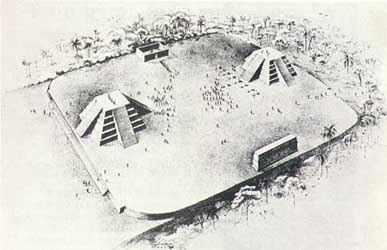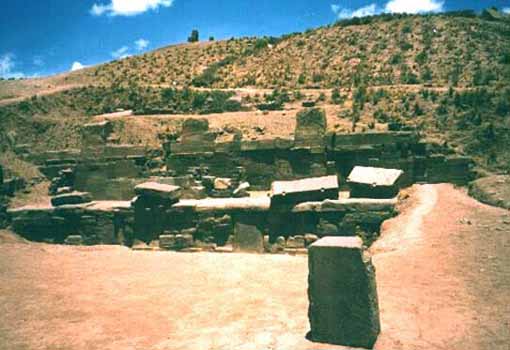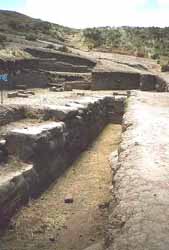Twin Pyramids in Guatemala

Tikal: Twin Pyramid Complex

Tikal: Twin Pyramid Complex
Reconstruction drawing of Complex Q by Norman Johnson, made in 1959. The stela enclosure is on the north side (top) with a nine-doorway palace on the south side. The flat-topped pyramids mark the east/west axis of the plaza.
"An emphasis on the world directions in twin-pyramid groups is obvious. The four structures are always placed in their proper sides of the plaza, so that no group is found in which the enclosure, for example, is to the south, east or west. The four-stairwayed pyramids are flat topped and do not favor any one direction. In themselves, they are fit stages for the ritualization of the four directions.
The use of the number nine in twin-pyramid group activities is immediately suggested by the south building which always had nine doorways. One can imagine the appearance of the nine 'Lords of the Night' or of priests carrying nine items for sacrifice, and so forth. "

Akapana, also referred to as Aka/Ana, is a large mound that once was part of a set of
twin pyramids with Puna Punka.
It is roughly rectangular in shape with an oval central depression thought to have functioned to hold water.

A stone built drain runs from the water holder through the mound to the south.
The mound was enclosed in a stone retaining wall of stepped plan, and is thought have had a stepped pyramid profile, not unlike the Mayan pyramids of Mexico.
When the Spanish came to Bolivia they dismantled the stone structure of Akapana, and used the masonry to build the cathedral at the nearby town of Tiwanaku.
While standing on the top of Akapana one can look across the altiplano and see the cathedral steeples looming in the horizon, a reminder of the forgotten Tiwanaku civilization.

PYRAMID INDEX SACRED PLACES AND TEXTS INDEX ALPHABETICAL INDEX OF ALL FILES CRYSTALINKS MAIN PAGE